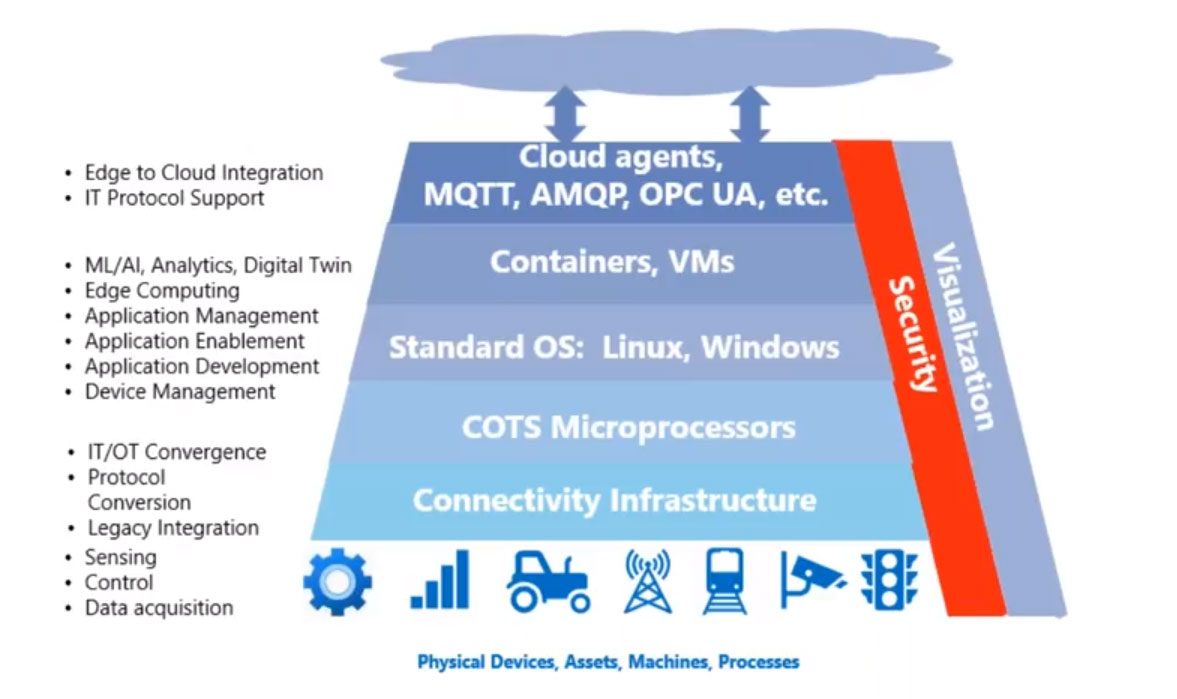More and more, Digital Transformation, or DX, is becoming a necessity for business operations. Its impact is particularly felt when automation systems and plant assets become a part of the initiatives. For these systems, it is Edge Computing that bridges the gap between sensor-enabled assets and cloud-based analytics. Due to this, it’s important to understand the essential elements for DX at the edge and plant, key architectural principles, and how to plan for a successful edge computing implementation.
Essential Elements for Digital Transformation
The essentials companies must consider for successful digital transformation can be divided into 3 categories – culture, technology, and measurement.
Culture
Teamwork is vital. Regardless of how much money is put into automation or enterprise technology, the chances of success are minimal if employees aren’t willing to accept the change. Knowledge transfer is critical as the veteran workforce retires and new employees assume those roles. Veterans should be empowering new workers to make important decisions as well as ensuring there is a level of capability and competency among workers. Finding ways to measure workforce performance will give an opportunity to reward workers and prepare them for leadership roles.
Another essential worth noting is a business governance process. This is a formality in work culture that captures the rules in running a business. Make sure these rules provide agility and process improvement when running operations.
Technology
Invest in Edge technology and ensure you have the appropriate technology architecture and governance, including the correct hardware, software and data management. In addition, workers also need to develop a risk tolerance when deploying new technology instead of avoiding change because of their comfort with the status quo.
Measurement
The old way of measuring success must evolve. Improve measurement systems by capturing the right key performance indicators (KPIs) and measurement for employees. By doing this you can provide better proof of success for your business and workers.
Key Architectural Principles and DX Options for the Edge
To absorb the data within edge devices, a strong connectivity infrastructure is required. Within those edge devices, can be commercial off the shelf (COTS) microprocessors, which are designed to access and manage this data which can run off software such as Linux or Windows. The data then is transferred to containers and VMs to finally get transported to the cloud. The data engage vehicles that are being used to get that data to the cloud can range from solutions such as OPC UA all the way to lower bandwidth solutions like MMQTT.
Within each layer, cybersecurity must be applied to each. In addition, within each layer, it’s critical to visualize the architecture to see the progress of the data as well as be able to make the appropriate diagnostics and changes if necessary.

Recommendations for Successful Edge Computing Implementation
- Develop an edge strategy
- Enforce OT/IT convergence within your company. Merge the two cultures and start assigning responsibilities.
- Look for a simple, remotely-manageable edge computing infrastructure to mitigate your resources constraint risks.
- Make sure the infrastructure is continuously available and can connect to both your data center and cloud
For more, watch John Fryer and Craig Resnick’s webinar, Digital Transformation Essentials for the Plant and Edge as they expand on these topics and offer more insight into best practices. Join to gain a better understanding of ways digital transformation drives change, its importance to your business, and how to become a go-to DX leader.
[sc name=”Edge_Computing_CTA_2″]